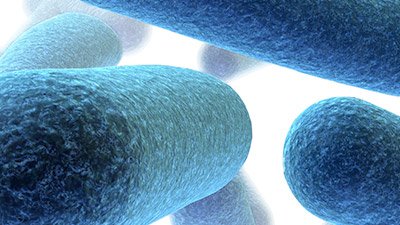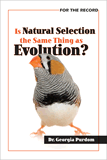
Just Add Bacteria
It’s evolution in an instant—or natural selection in six years, to be more precise.
News Source
- ScienceDaily: “Instant Evolution in Whiteflies: Just Add Bacteria”
Researchers report in the journal Science the discovery of “evolution” in the whitefly Bemisia tabaci that has occurred in less than a decade. The change is in response to bacteria of the genus Rickettsia that have rapidly infested most whiteflies in Arizona, the state where the research was conducted.
In 2000, scientists studying this species of whitefly in Arizona found that only around one percent were infested with Rickettsia. But three years later, half the population was infested, and now, nearly all whiteflies in the state harbor the microbes. Apparently, the presence of Rickettsia in a female whitefly increases its egg-laying and causes the fly’s offspring to develop more quickly and better survive to adulthood. Additionally, the bacteria cause the flies to lay more female eggs than male—and since the bacteria are only transmitted from mother to offspring, this has accelerated Rickettsia’s takeover of the flies. The exact biological mechanism by which the bacteria affect the flies is still not understood, however.
University of Arizona entomologist Molly Hunter explained, “Our lab studies suggest that these bacteria can transform an insect population over a very short time. It is not uncommon to find a microbe providing some benefits to their hosts, but the magnitude of fitness benefits we found is unusual.”
Processes like this could continue for hundreds of millions of years without transforming a whitefly into anything other than a whitefly.
As with virtually every observation of “evolution” reported, this study does nothing to support or advance the Darwinian view of common ancestry—that from a single, simple life-form, all the complex and diversified life-forms arose. That perspective requires a mechanism to produce novel genetic information in organisms that can lead to new biological capabilities. But in this study, there is no indication that whiteflies themselves have undergone any genotypic change, but rather that they benefit on an environmental level from symbiosis with the Rickettsia bacteria. In other words, processes like this could continue for hundreds of millions of years without transforming a whitefly into anything other than a whitefly. Once again, the concept of natural selection—which creationist researchers endorse—and the biology of symbiotic relationships explains the observational data without any need for Darwinian evolution.
For More Information: Get Answers
Remember, if you see a news story that might merit some attention, let us know about it! (Note: if the story originates from the Associated Press, FOX News, MSNBC, the New York Times, or another major national media outlet, we will most likely have already heard about it.) And thanks to all of our readers who have submitted great news tips to us. If you didn’t catch all the latest News to Know, why not take a look to see what you’ve missed?
(Please note that links will take you directly to the source. Answers in Genesis is not responsible for content on the websites to which we refer. For more information, please see our Privacy Policy.)
Recommended Resources

Answers in Genesis is an apologetics ministry, dedicated to helping Christians defend their faith and proclaim the good news of Jesus Christ.
- Customer Service 800.778.3390
- Available Monday–Friday | 9 AM–5 PM ET
- © 2025 Answers in Genesis





